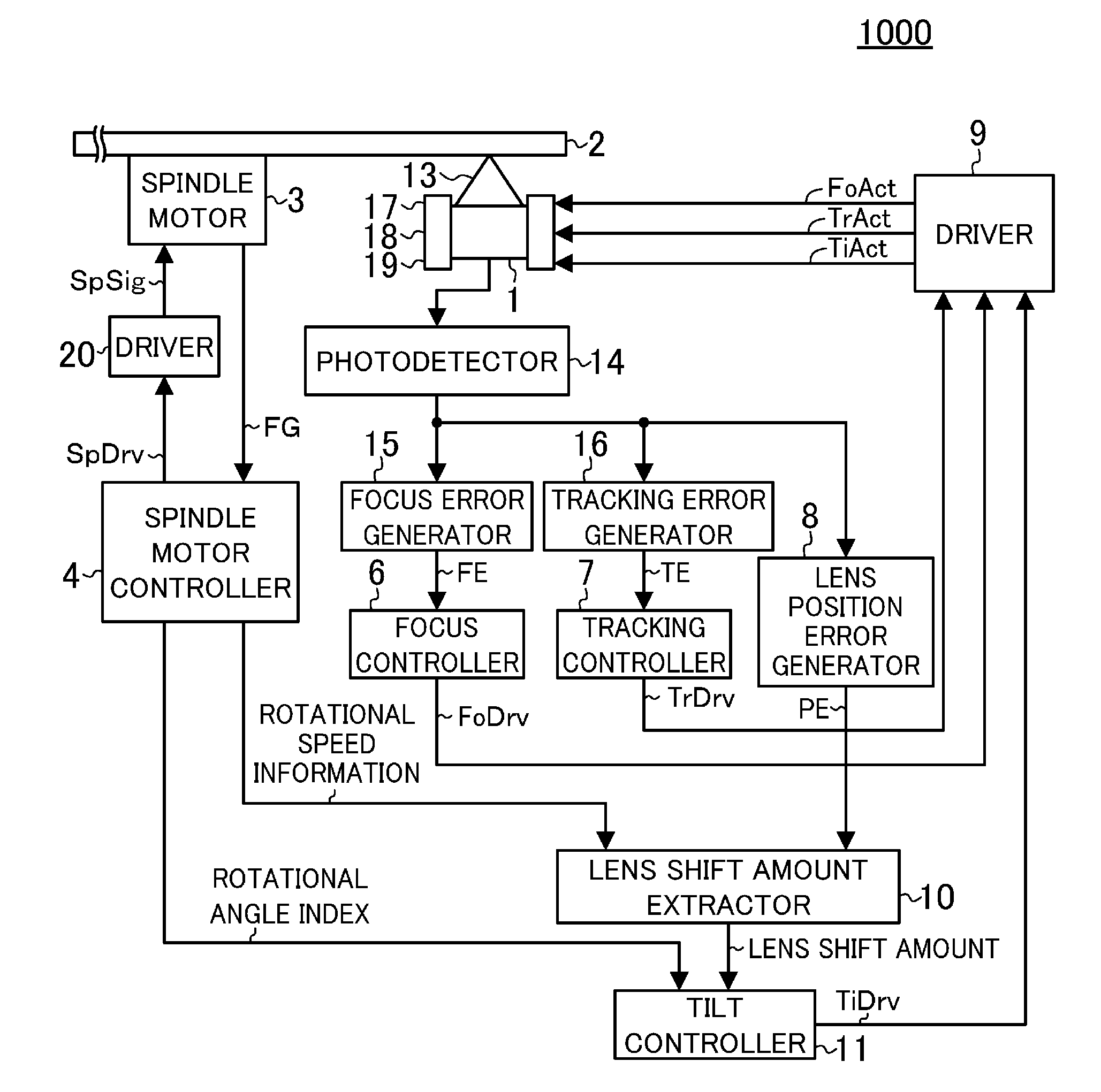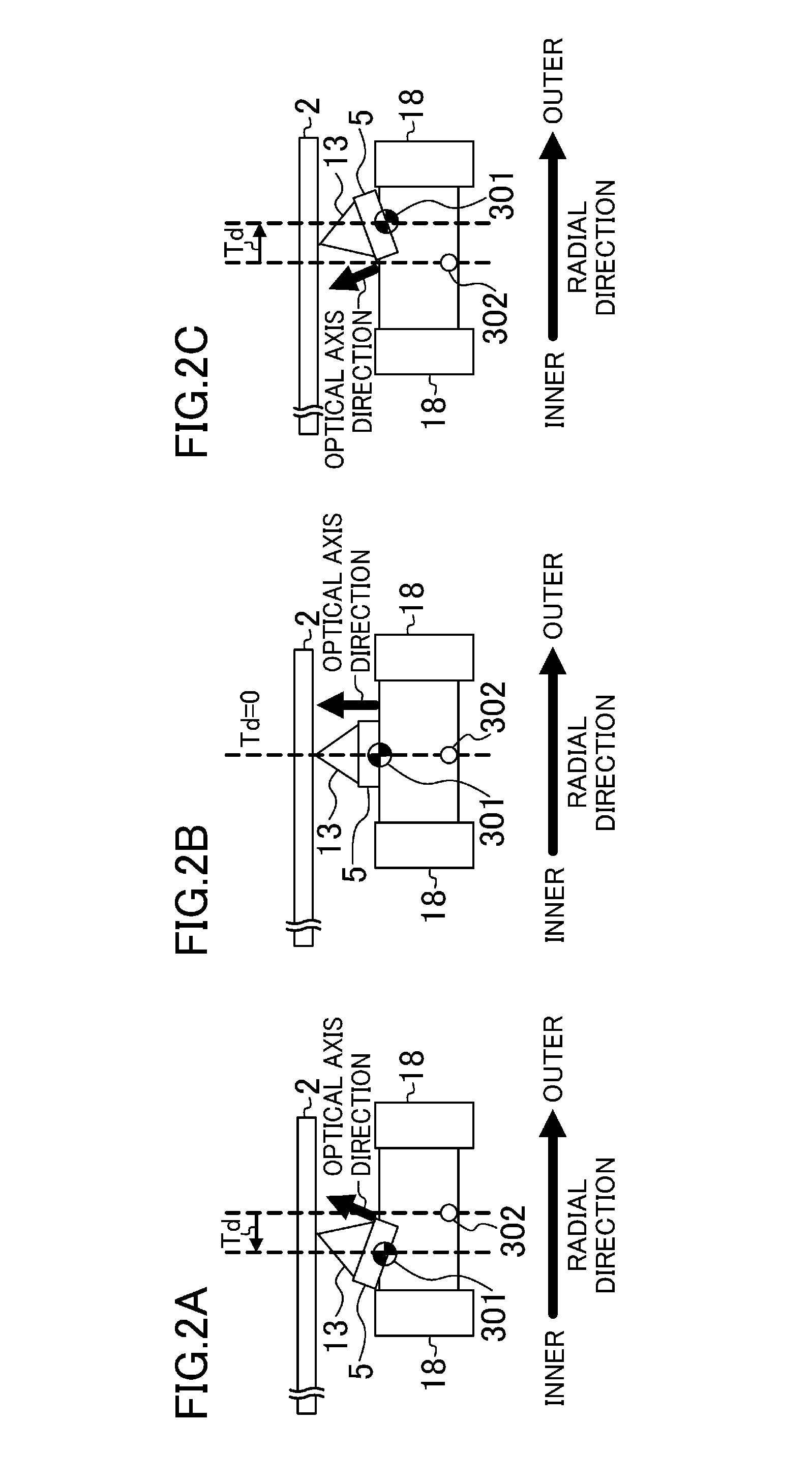Optical disk device and method for controlling the same
- Summary
- Abstract
- Description
- Claims
- Application Information
AI Technical Summary
Benefits of technology
Problems solved by technology
Method used
Image
Examples
first embodiment
[0024]FIG. 1 is a block diagram showing an optical disk device 1000 according to a first embodiment of the present disclosure. The optical disk device 1000 performs at least one of reproduction and recording of information from and to an optical disk 2 by irradiating the optical disk 2 with laser light 13. Firstly, a focus servo mechanism, a tracking servo mechanism, and a spindle motor servo mechanism will be described with reference to FIG. 1.
[0025]An optical pickup 1 irradiates the optical disk 2 with the laser light 13, receives light reflected from the optical disk 2 using a photodetector 14, and converts the reflected light into an electrical signal. The electrical signal obtained by conversion of the reflected light is supplied to a focus error generator 15 and a tracking error generator 16.
[0026]The focus error generator 15 detects a deviation between the position of a data layer of the optical disk 2 and the position of a focal point of the laser light 13 based on the elect...
second embodiment
[0053]FIG. 6 is a block diagram showing an optical disk device 1001 according to a second embodiment of the present disclosure. Elements of the optical disk device 1001 of FIG. 6 similar to those of the optical disk device 1000 of FIG. 1 are indicated by the same reference characters and will not be described in detail.
[0054]As shown in FIG. 6, the optical pickup 1 irradiates the optical disk 2 with the laser light 13. During at least one of reproduction and recording of information from and to the optical disk 2, the tracking servo mechanism is active. At this time, the tracking control signal TrDry output from the tracking controller 7 contains information about a position of the objective lens 5 in the radial direction of the optical disk 2. Therefore, the lens shift amount extractor 10 can extract a lens shift amount from the tracking control signal TrDrv. If a lens shift amount is extracted from the tracking control signal TrDrv, the lens position error generator 8 of FIG. 1 ca...
third embodiment
[0059]FIG. 8 is a block diagram showing an optical disk device 1002 according to a third embodiment of the present disclosure. Elements of the optical disk device 1002 of FIG. 8 similar to those of the optical disk device 1000 of FIG. 1 are indicated by the same reference characters and will not be described in detail.
[0060]As shown in FIG. 8, either the tracking control signal TrDry or the lens position error signal PE is selected by a signal selector 12, and supplied as a signal Y to the lens shift amount extractor 10. The lens shift amount extractor 10 receives the rotational speed information of the spindle motor 3 generated by the spindle motor controller 4 and the signal Y selected by the signal selector 12, and eliminates rotation components of the optical disk 2, high-frequency components which do not include lens shift components, etc., which are contained in the signal Y, to extract a lens shift amount. An LPF, a BEF, etc. can be used as a filter for eliminating the rotati...
PUM
 Login to View More
Login to View More Abstract
Description
Claims
Application Information
 Login to View More
Login to View More - R&D
- Intellectual Property
- Life Sciences
- Materials
- Tech Scout
- Unparalleled Data Quality
- Higher Quality Content
- 60% Fewer Hallucinations
Browse by: Latest US Patents, China's latest patents, Technical Efficacy Thesaurus, Application Domain, Technology Topic, Popular Technical Reports.
© 2025 PatSnap. All rights reserved.Legal|Privacy policy|Modern Slavery Act Transparency Statement|Sitemap|About US| Contact US: help@patsnap.com



